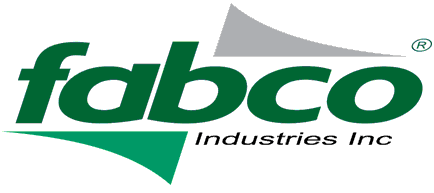On Monday, Feb 3, Fabco Industry’s new website containing stormwater filtration products went live. We took an already informative website and made it more receptive. Now, you will more quickly find the facts you need on our entire catalogue of stormwater treatment solutions. You can also read case studies–real world solutions that are currently being utilized throughout the nation.
We invite you to watch videos of Fabco filtration products in action. Discover the benefits of our ever-evolving technology, including StormSack, Connector Pipe Screen and Trench Drain filter, the Down Spout Filter, the StormSafe Cartridge Vault, our Helix Filter and revolutionary StormBasin innovations. Of course, you need to consider the advantages you will gain by utilizing our stormwater filtration FABGUARD technology.
STORMWATER FILTRATION PRODUCTS MANUFACTURER
The whole goal of our website upgrade was to better provide you with information you need to manage stormwater and stormwater filtration for your town, city, business or property. Whether a new project or a retrofit, Fabco wants to be part of your stormwater filtration solution. Explore the options on our website then talk to us about your needs.
EPA Reference material
The significance of storm water runoff in affecting water quality in the United States has become an increasing concern in recent years, as further improvements are made in controlling other point sources such as municipal sewage and industrial waste. EPA conducted a broad analysis of storm water runoff characteristics in its Nationwide Urban Runoff Program between 1979 and 1983.
During the 1980’s the Agency made several attempts to promulgate regulatory controls for storm water runoff under the statutory framework of the 1972 Clean Water Act. Following enactment of the Water Quality Act of 1987, EPA began development of a more comprehensive regulatory program.
During the course of these actions, the use of best management practices (BMPs) in addressing runoff problems was frequently identified, however it was known that additional research on the performance of BMPs was also needed. EPA’s Engineering and Analysis Division conducted a study on storm water best management practices during 1997 and 1998 as part of its series of preliminary studies in the effluent guidelines program.
This report summarizes existing information and data regarding the effectiveness of BMPs to control and reduce pollutants in urban storm water. The report provides a synopsis of what is currently known about the expected costs and environmental benefits of BMPs, and identifies information gaps as well.
1. Waterways and receiving waters near urban and suburban areas are often adversely affected by urban storm water runoff. Impacts may be manifested in terms of:
• alterations in hydraulic characteristics of streams receiving runoff such as higher peak flow rates, increased frequency and duration of bankfull and sub-bankfull flows, increased occurrences of downstream flooding, and reduced baseflow levels 1 – 2
• changes in receiving stream morphology such as increased rates of sediment transport and deposition, increased shoreline erosion, stream channel widening, and increased stream bed scouring
• aquatic habitat impacts leading to changes in fish and macroinvertebrate populations and loss of sensitive species
• public health and recreation impacts such as increased risk of illness due to contact with contaminated water bodies, contamination of drinking water supplies, beach closures, restrictions on fishing, and shellfish bed closures.
2. A wide variety of BMPs, both structural and non-structural, are available to address urban storm water runoff and discharges.
• For various reasons (such as cost, suitability to site, etc.) some of these BMP types are widely used, some infrequently; some are relatively new designs that are not widely in use.
• Many BMPs are used primarily for water quantity control (i.e. to prevent flooding), although they may provide ancillary water quality benefits.
• Some BMP types have been analyzed for performance in terms of site-specific pollutant removal, although not extensively enough to allow for generalizations.
• The pollutant removal performance of some BMP types is essentially undocumented.
• Some BMP types, particularly non-structural and those that do not have discrete inflow or outflow points, are difficult to monitor.
• There is no widely-accepted definition of “efficiency” or “pollutant removal” for storm water BMPs.
• The role of chemical pollutant monitoring vs. receiving stream biological monitoring in evaluating BMP performance is not well documented.
3. Only a few cost studies have been conducted for storm water BMPs.
• Due to the limited cost data, a lack of clear definitions of performance, and limited “performance” data, it is difficult at this time to develop cost-effectiveness comparisons for various BMP types.
4. The benefits of individual BMPs are site-specific and depend on a number of factors including: 1 – 3
• the number, intensity and duration of wet weather events; • the pollutant removal efficiency of the BMP; • the water quality and physical conditions of the receiving waters;
• the current and potential use of the receiving waters; and
• the existence of nearby “substitute” sites of unimpaired waters. Because these factors will vary substantially from site to site, data are not available with which to develop estimates of benefits for individual BMP types. 5. A number of researchers are continuing to work on BMP performance monitoring, and there are several attempts underway to develop comparison frameworks through the construction of comprehensive databases on BMP design characteristics and performance.

